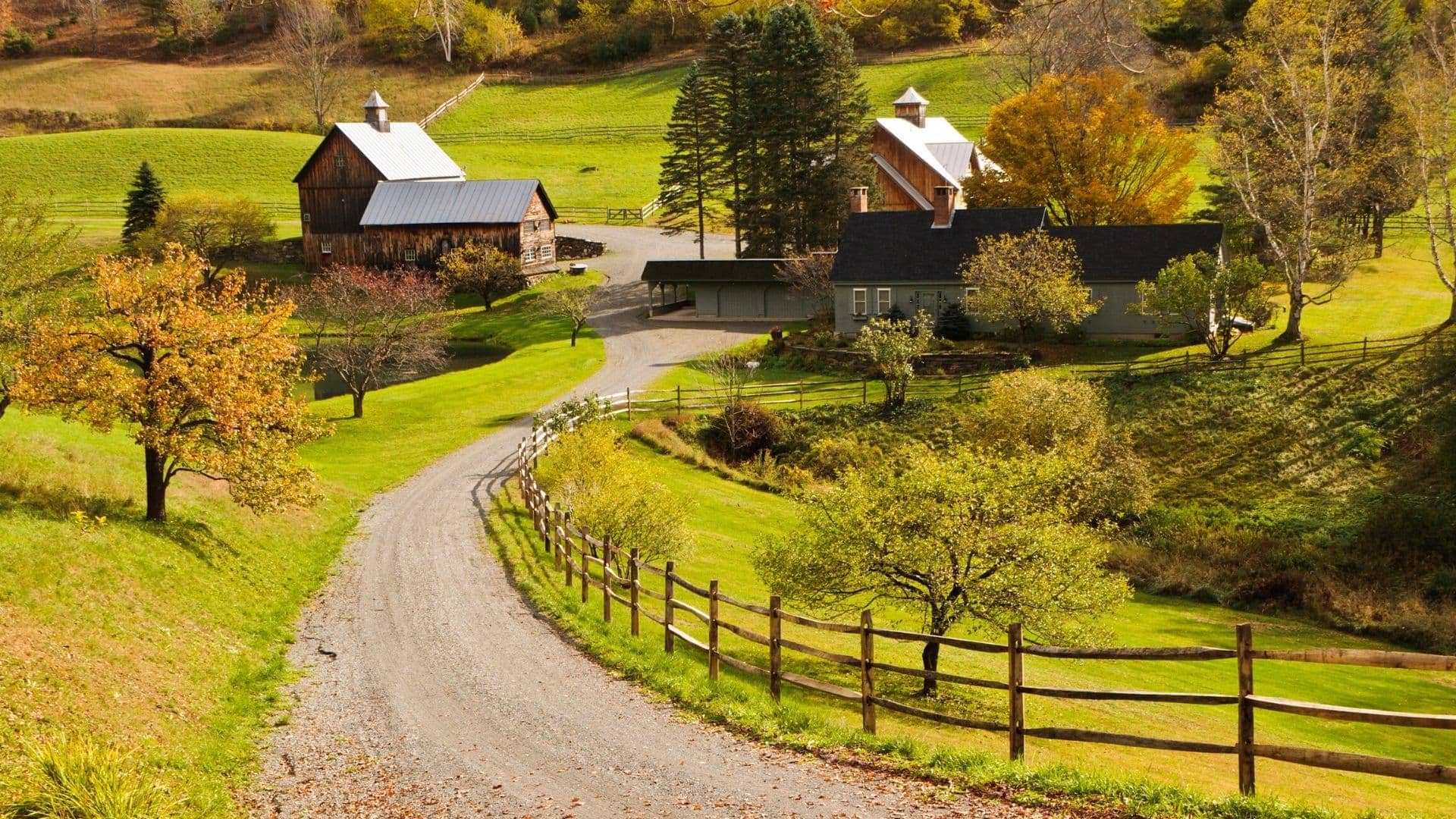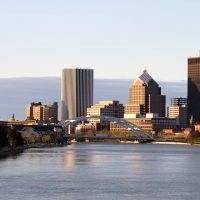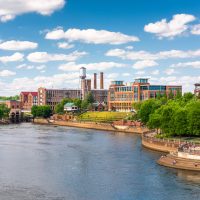Are you looking to purchase a property for homesteading? If so, it’s a big decision, and there are a few things you’ll want to keep in mind. Whether you’re looking to buy land in Tyler, TX real estate market, an established farm for sale in Kuna, ID, or anywhere else in the United States, after reading this article about things to look for when buying the perfect homesteading property, you will be able to make an informed decision when purchasing your land.
What is homesteading?
Homesteading is another term for a resilient or self-sufficient lifestyle. The modern homesteader typically grows their own produce and raises livestock. It’s not so much where someone lives, but the lifestyle choices they make to be more resourceful.
What To Think About When Looking For Homesteading Property
Here are nine things to look for when buying a homesteading property. They’re in no particular order as they’re all important.
1. Accessible Property
Having access to your property may seem silly, but it is important and there are several aspects to consider.
- Can you access the property? Believe it or not, there are some properties out there with no road frontage or easements on adjacent properties that grant access to the land.
- An easement allows an entity or person to access private property for a specific purpose. It’s not necessarily bad to need an easement to access your property, but there are some things to consider. It’s a good idea to talk to the property owner of the easement to get to know them, learn how the property fares during inclement weather, who manages the easement, and what it takes to maintain the road. HINT: Unless there’s written language for maintenance, the grantor of the easement (dominant land owner) is usually responsible for the road’s upkeep.
- It’s extremely common in rural America for the roads to be rough. Some are paved, others may be caliche (gravel), or even plain dirt. Depending on the time of year, the condition of these roads can change. You’ll want to know who is in charge of maintaining the roads in your area. It may be maintained by the county, parish, or borough, or, depending on how remote the property is, it’s the landowners’ responsibility.
2. Water Availability
A property may already have a water source, but if not, you’ll need to figure out how you’re going to access water before you buy.
- Can you tap into municipal water? If so and the land doesn’t already have water available, you’ll want to contact the municipality to find out what it takes to get water at the property.
- There may be spring water, which can be good, but you’ll want to know how reliable it is. It could be harder to access at different times of the year. More than anything, though, you’ll need to know who owns the water rights and if you can obtain them as the landowner. This can vary from state to state.
- If there is an aquifer, like the Ogallala Aquifer in Lubbock, TX, then accessing it from a well can be ideal. If the property already has a well, this is a huge plus. If not, you’ll want to find out from the water well company what it would take to establish a well on the property before closing.
3. Power Source
Unless you’re going off-grid from the electrical system, the next thing you’ll want to know is if the property has electricity. If so, this is great news. Oftentimes on raw land, there won’t be electricity, but you’ll hear that “it’s close.” This is another area that will behoove you to do some due diligence and have the electricity company tell you just how close the electricity is and how much it will cost to get it where you want it on the property before closing.
Some places like Wisconsin, installed some kind of renewable energy system on their farms such as solar panels and wind turbines to solve their electricity problem and to have a clean energy source.
4. Internet Access
In this day and age, having access to a reliable internet source is crucial. The majority of jobs require an internet connection these days. In fact, the effects of remote work can be seen in almost every industry now. It’s so popular that almost half of all home buyers work from home. That being said, many homesteaders may live a more primitive lifestyle but still need technology and internet access to perform their job well.
It’s common for the internet in rural parts of the country to be spotty. You’ll want to ask the locals who they use as their internet provider. For some, there’s no reliable internet provider, so they’ve found other ways to get connected. A couple of ideas are:
- Buy a booster (typically around $500-600) and mount it to your roof. And get a hotspot, either on your phone or externally.
- Install a personal internet tower on your property (about $2K- $5K). This is definitely extreme, but this is a viable option in getting reception in some parts of the country, like the real estate in Canton, TX.
5. Condition of the Property
Look at the overall set-up of the property. Do you want trees, a pond, or plenty of open space for gardening or livestock grazing? Does the property naturally come with features you want or need, or will you need to work the land to get it how you’d like?
Raw Land or Existing Infrastructure
Whether the homesteading property you’re considering is raw land or has existing infrastructure, it is something you need to think about heavily. There’s nothing wrong with either option, but depending on how quickly you want to get started growing your own produce or raising livestock, it can be greatly affected by the infrastructure that’s in place or not.
If there is an existing home and buildings, you’ll want to get them inspected and factor in any repairs that may be needed. We all like the picturesque scene of an old farmhouse nestled in some trees on the prairie, but newer homes are easier to maintain. It might be a good idea to keep this in mind if you don’t want to have the extra work unless you’re prepared to maintain an older home.
Figure out where you’ll want your home. If it’s raw land you’re looking at, take some time to walk and explore the property. Some things to consider are:
- Positioning the home closer to road frontage means less driveway maintenance.
- If the property has a hilly terrain, consider where you want your home along a hill. Do you want to be on high ground? You could be more exposed, may cost more energy to keep the home cool, and experience more wind. If you’re considering a valley, it’s typically cooler and wet. Somewhere in between, on the slope, for instance, may bring a balance to these conditions, but you may have to create flat areas.
Every property is different, so there’s no one general right or wrong way to place a home and outbuildings. Do what makes the most sense for the space you have.
Property Size
When looking at land, think about the size of the property. Do you have a small or large family? Are you raising cattle? Is the land you’re considering going to be too big or not big enough? Buying a homesteading property is a big decision, and you don’t want to get in over your head on a large property. On the flip side, buying a property that’s too small for your needs could make you want to move in a few years. If you’re ready to settle and not outgrow a space, think about the property you’re considering and determine if it will be a good fit for the long haul.
6. Location of the Property
There are two things to consider when thinking about the property’s location.
- Does the property get good sunlight? This would be particularly important when thinking of gardening. Are there trees shading the open space, causing the space to be less ideal for gardening? Is the property covered in trees, but you’re planning to raise livestock? Sure, they could roam through a forest, but is it ideal for grazing?
- How is the proximity to conveniences like grocery stores, banks, the post office, and hospitals? You can plan your visits to town for errands, but you’ll need a plan in the event of an emergency if you’re not within close proximity to a hospital.
7. Property Zoning
Commercial and residential are the main two zones you may hear of. If you’re planning to own livestock, though, you’ll need to make sure the property is zoned for agriculture.
8. Cost of the Property
I’m sure you’re already thinking about the purchase price, but you’ll want to be aware of the cost of maintaining the property. You’ll need to be prepared for taxes, insurance, and repairs (whether on equipment, vet bills, mending fences, etc.).
Pro-Tip: If a property has an agricultural or timber exemption, this will help save on taxes.
9. Know the Neighbors
Though your neighbors are few and far between and you may be moving out to the country with the intention of moving away from people, it’s still good to have community and know your neighbors. Chances are, your neighbors are living a similar lifestyle. You never know when you’ll need each other’s help. Who knows, you may have a breech calf that requires assistance, your tractor may get stuck.
Unlike New York City, NY that has the largest municipal fire department in the United States, in rural America, there’s not a fire department waiting to assist. There may be a volunteer fire department, but it will take them a while to get to you if there is a fire. Having friendly and supportive neighbors can be of great help in these circumstances.
Buying a Property For Homesteading
We hope you’re now aware of things to look for when buying a homesteading property. Your next step would be getting connected to a real estate agent but be sure to know the right questions to ask before hiring a real estate agent. They will be able to guide you through the process of buying your land.






